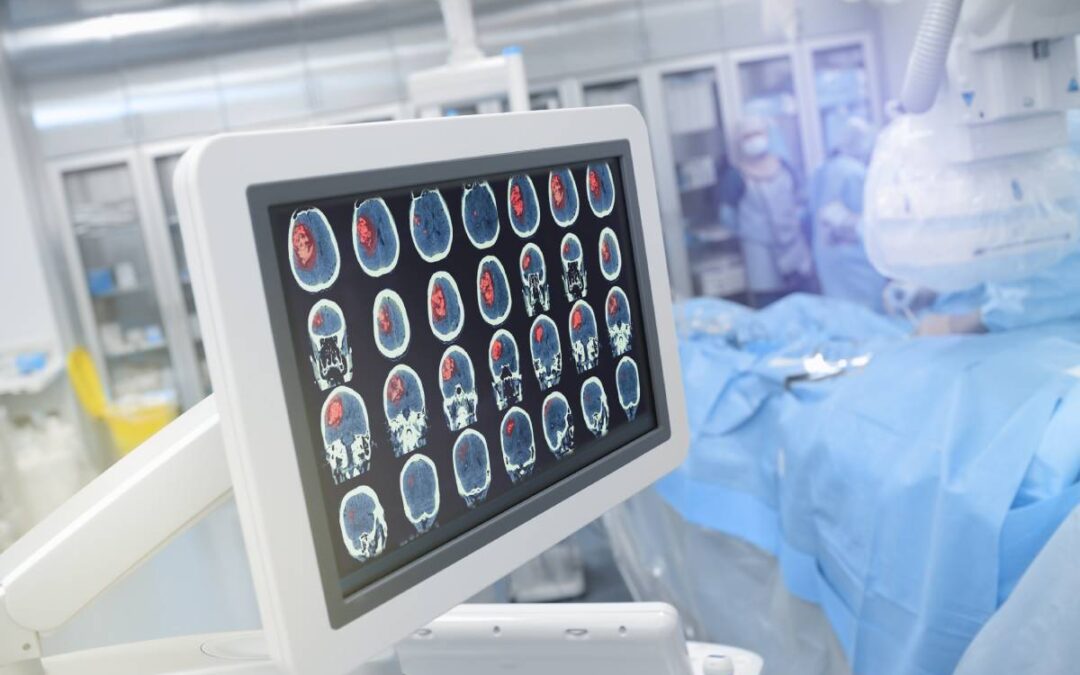Seizures are the clinical manifestation of abnormal electrical activity in the brain, characterized by excessive, synchronous oscillations in groups of neurons that overwhelm neural circuitry (1). The most common types in the surgical context include generalized tonic-clonic seizures, which involve characteristic muscle jerks (myoclonus) and involuntary movements (ataxia), as well as absence seizures, which are less obvious and typically appear as though the patient suffering from the seizure is merely “staring into space” (1). However, both types can be detected with electroencephalogram (EEG) readings, and both can cause breathing apnea, brain circuitry rewiring, and neuron death in severe cases (1, 2). The transformation of normal brain activity into an overexcitable electrical network is known as epileptogenesis, a series of events that reorganizes synaptic and network systems and predisposes the brain to structural changes (2, 3). The underlying mechanisms of epileptogenesis remain poorly understood — however, the process can be triggered within the surgical context (2, 3). Although the prevalence of seizures varies greatly depending on the type of surgery, numerous studies converge at the estimation that around 3 in 10,000 surgical patients experience intraoperative seizure (4). Before and during surgery, two important elements may precipitate epileptogenesis: patient history of brain disorders and medication administration.
Patients with histories of seizures, brain tumors, head trauma, central nervous system infections, and cerebral degenerative diseases are at the highest risk of intraoperative seizures (5). Specifically, epileptic patients who discontinued their seizure medication (anti-epileptic drugs, or AEDs) before surgery, have prior history of intraoperative seizures, and are sleep deprived are at high risk of seizing (1, 6, 7). Second, the administration of certain medications can provoke seizures. Surgical patients under general anesthesia have a significantly higher risk of postoperative seizure compared to those under neuraxial anesthesia (e.g. epidural), as general anesthetics change the oscillatory patterns of neurons and inhibit neuronal communication, which increase the risk of epileptogenesis (5, 8). Many anesthetics can be both pro- or anti-convulsive, depending on the dose and the individual patient (9). For example, case reports have linked enflurane, sevoflurane, and etomidate to convulsions, which can escalate into tonic-clonic seizures, especially in patients with brain disorders (9). Epileptic patients are particularly susceptible, as their brain circuitry may be predisposed to the synchronized neural membrane depolarization that can be caused by anesthetics — even low doses or typically anti-convulsive anesthetics can increase their epileptogenic potential (5, 9). Additionally, seizures can occur after administration of moderate to large amounts of local anesthesia if the anesthetic inadvertently enters the bloodstream (10).
To avoid intraoperative seizures, experts recommend the avoidance of pro-convulsive anesthetics, especially sevoflurane and etomidate; the use of intraoperative electrocorticographic (EEG) monitoring; and the consideration of prophylactic benzodiazepines (3, 9). Attentive EEG observation is critical — while generalized tonic-clonic seizures are obvious to the surgical team, non-convulsive status epilepticus can often only be identified by EEGs (9). Additionally, non-epileptic psychogenic seizures may present as true status epilepticus, but EEGs reveal that anti-epileptic drugs are unnecessary (3, 9). Prophylactic administration of anti-epileptic drugs remains a controversial topic, as evidence suggests they do not reduce risk in patients without epileptic history (2). However, for epileptic patients, prescribed anti-epileptic medication should continue to be taken before and after the surgery with minimal interruption (7). If seizures occur, benzodiazepines should be administered, followed by anticonvulsants or barbiturates, and finally propofol or thiopental if the seizure continues (9). While surgical epileptogenesis is poorly understood and does not exhibit uniform patterns, steps can be taken to reduce the risk of seizure during surgery.
References
1: Fisher, R., Cross, J., French, J., Higurashi, N., Hirsch, E., Jansen, F., Lagae, L., Moshé, S., Peltola, J., Perez, E., Scheffer, I. and Zuberi, S. Operational classification of seizure types by the International League Against Epilepsy. Epilepsia, vol. 58. DOI: 10.1111/epi.13670.
2: Ersoy, T., Ridwan, S., Grote, A., Coras, R. and Simon, M. 2020. Early postoperative seizures (EPS) in patients undergoing brain tumour surgery. Scientific Reports, vol. 10. DOI: 10.1038/s41598-020-70754-z.
3: Voss, L., Sleigh, J., Barnard, J. and Kirsh, H. 2008. The howling cortex: seizures and general anesthetic drugs. Anesthesia and Analgesia, vol. 107. DOI: 10.1213/ane.0b013e3181852595.
4: Akavipat, P., Rungreungvanich, M., Lekprasert, V. and Srisawasdi, S. 2005. The Thai anesthesia incidents study of perioperative convulsion. Journal of the Medical Association of Thailand, vol. 88.
5: Nossek, E., Matot, I., Shahar, T., Barzilai, O. Rapoport, Y., Gonen, Sela, G., Grossman, R., Korn, A., Hayat, D. and Ram, Z. 2013. Intraoperative seizures during awake craniotomy: incidence and consequences: analysis of 477 patients. Neurosurgery, vol. 73. DOI: 10.1227/01.neu.0000429847.91707.97
6: Niesen, A., Jacob, A., Aho, L., Botten, E., Nase, K., Nelson, J. and Kopp, S. 2010. Perioperative seizures in patients with a history of a seizure disorder. Anesthesia and Analgesia, vol. 111. DOI: 10.1213/ANE.0b013e3181e534a4.
7: University of Virginia Health. 2016. Guidelines for anesthesia and surgery in people with epilepsy. UVA Health Patient and Family Education. URL: https://med.virginia.edu/neurology/wp-content/uploads/sites/235/2015/11/PE04105_eng_GuidelinesAnesthesia.pdf.
8: Chang, H.C., Liao, C., Chang, C.C., Huang, S., Yeh, C., Hu, J., Cherng, Y. and Chen, T. 2017. Risk of epilepsy in surgical patients undergoing general or neuraxial anaesthesia. DOI: 10.1111/anae.14099.
9: Perks, A., Cheema, S. and Mohanraj, R. 2012. Anaesthesia and epilepsy. British Journal of Anaesthesia, vol. 108. DOI: 10.1093/bja/aes027.
10: Koppel, B. 2004. Surgery and anesthesia. Epilepsy Foundation. URL: https://www.epilepsy.com/learn/professionals/diagnosis-treatment/drugs-their-contribution-seizures/surgery-and-anesthesia.





Recent Comments